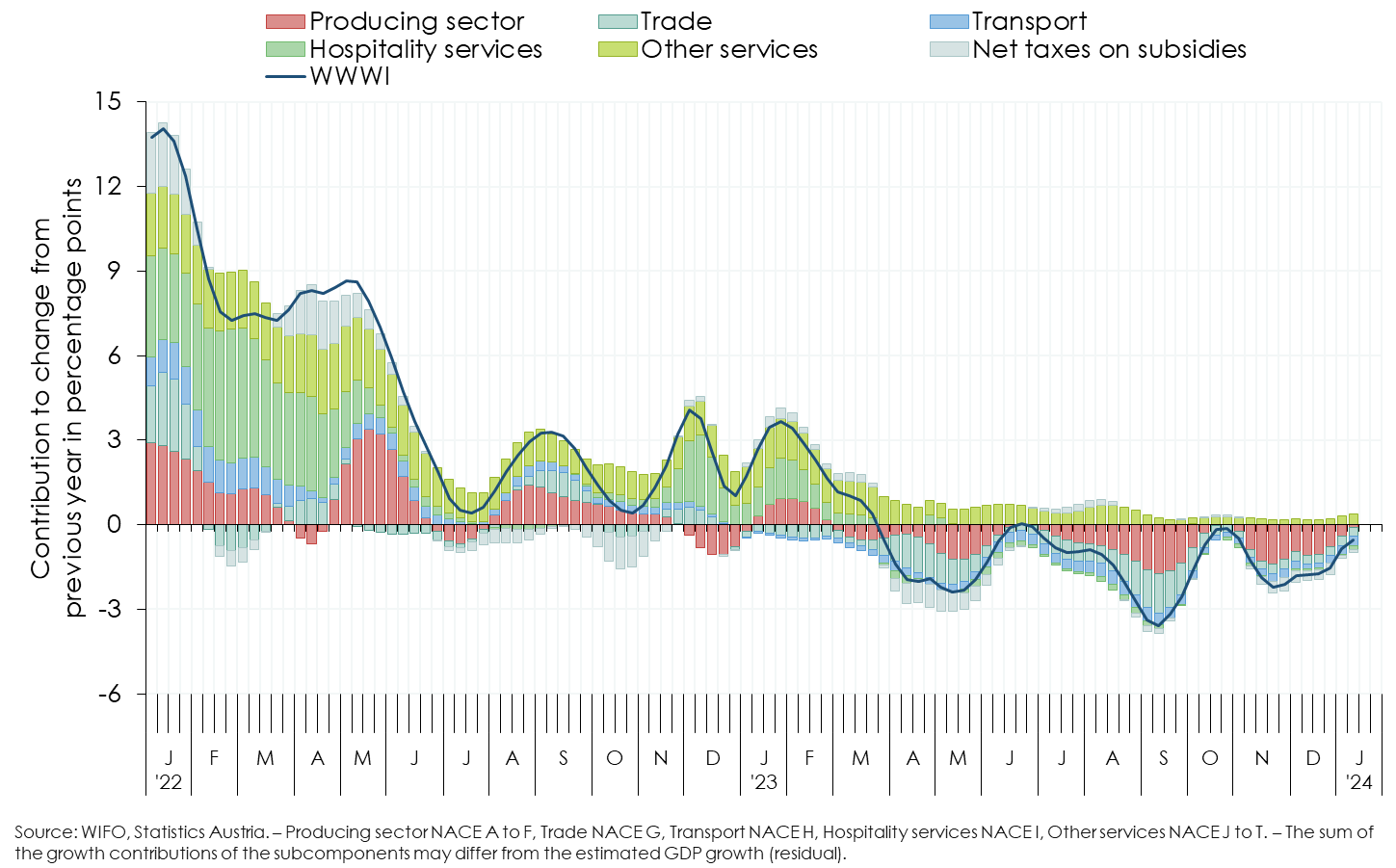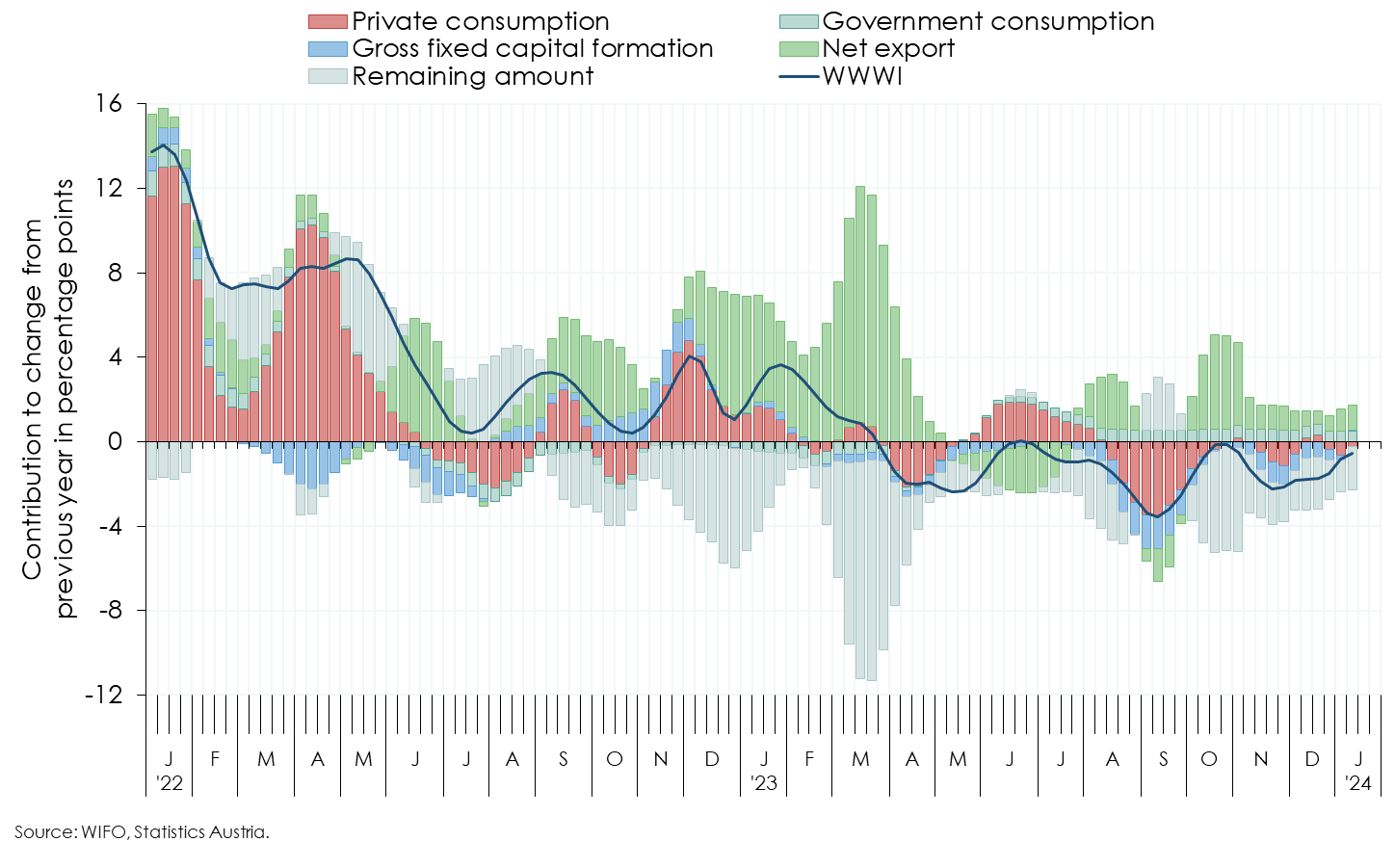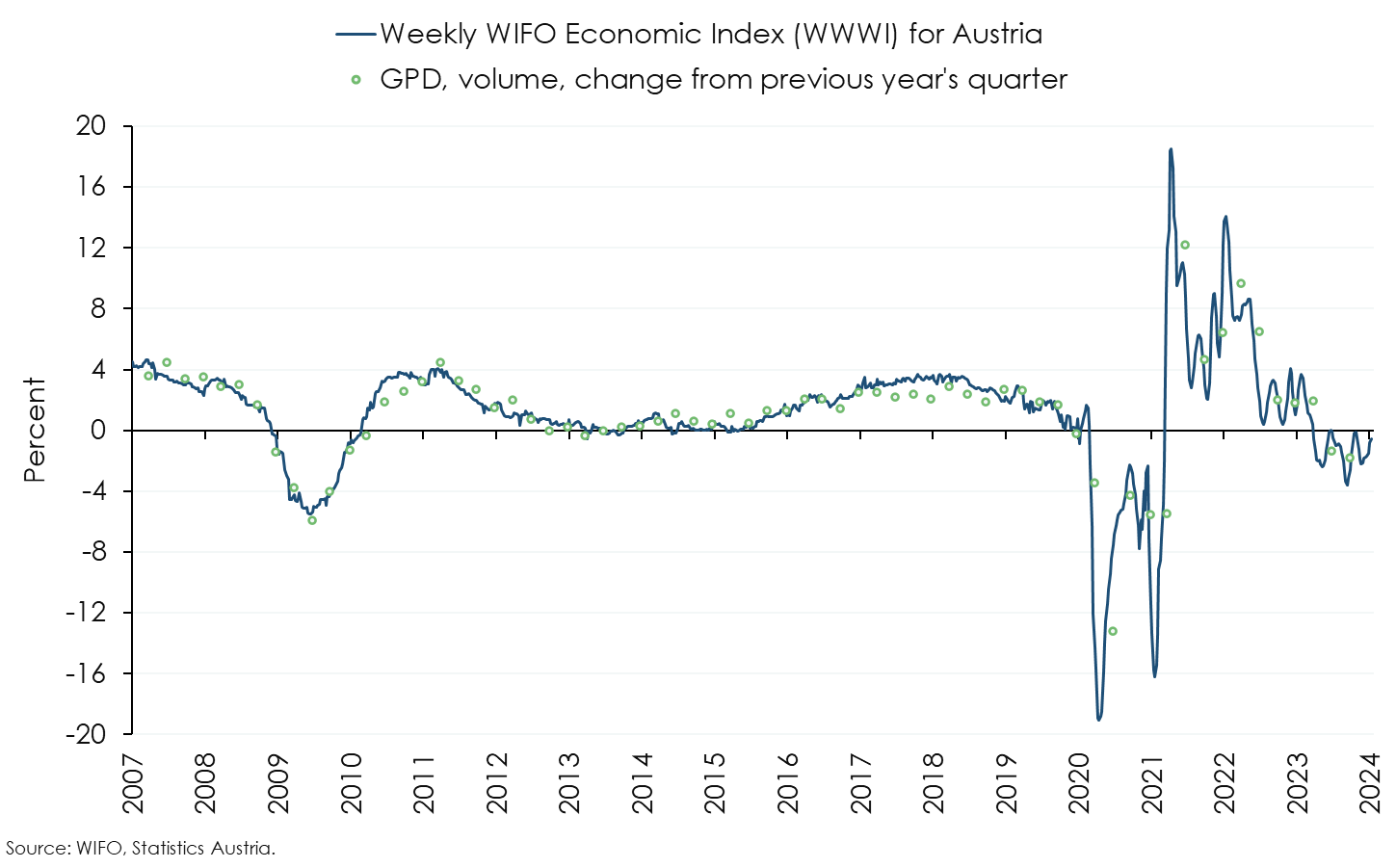Information on the publication of the WWWI: The WWWI estimates are (currently) updated monthly and published on WIFO's website.
WWWI for GDP and its subcomponents
Based on the weekly GDP indicator (WWWI), economic output in Austria in January (calendar weeks 1 to 4) was 3 percent below the previous year's level and, according to a preliminary estimate, 4¼ percent lower in the first two weeks of February (calendar weeks 5 and 6; December 2023 –3½ percent, revised). The significant revision compared to the last WWWI calculation is due to a markedly weaker realisation of the production indices for industry and especially for construction in December 2023, which also led to weaker output in business-related services1.
The inflation-adjusted volume of non-cash transactions, as an indicator of household consumption, still shows a marked decline in the demand for goods (retail sales) in January and a slight year-on-year decline in the first half of February. Demand for services follows the same pattern, but is somewhat more pronounced. Private consumption is estimated to have fallen by 1 percent in January and by ½ percent in early February compared with a year earlier (December –2 percent).
The development of gross fixed capital formation is determined by economic output (industrial production) and sentiment in the producing sector (according to the WIFO-Konjunkturtest, business cycle survey). In January, the decline is estimated at 7 percent compared to the previous year (December –8½ percent).
The number of trucks on Austria's motorways and the volume of rail freight transport fell again in January and the first half of February compared to the same period last year. In contrast, the number of flights handled at Vienna Airport continued to rise. Although exports contracted overall, net exports improved somewhat as (goods) imports fell even more. The estimated growth contribution of net exports in the broad sense to GDP was therefore still slightly positive in January, at +¼ percentage point (December +½ percentage point).
The weakness of freight transport is also reflected in the value added of the transport sector (NACE H). At –3¼ percent in January and –1¼ percent in the first half of February, it remained below the level of a year ago (December –3 percent).
In the goods-producing sector (NACE A to E), employment in January was below the previous year's level for the first time since February 2021, and the number of job seekers, although still at a relatively low level in a long-term comparison, has been rising year-on-year since April 2023. The WIFO-Konjunkturtest (business cycle survey) shows a highly pessimistic sentiment among manufacturing firms, both in terms of their assessment of the current situation and their expectations for the coming months. Based on the weaker starting position in December (production index) and the indicators for January and February, WIFO expects value added in the goods-producing sector to be 7 percent lower in January and 12¼ percent lower at the beginning of February than in the previous year.
Also in the construction sector (NACE F), the estimated year-on-year change in value added for December had to be revised sharply downwards from the previous calculation to –8½ percent. According to the WIFO-Konjunkturtest (business cycle survey), the assessment of the current situation by construction firms did not deteriorate further in January, although expectations for the next months worsened again. The number of unemployed in the construction sector has been rising for a year, while employment has been falling for six months. On the basis of the less favourable starting position in December and the relatively stable situation indicators, value added is estimated to have fallen by 8½ percent year-on-year in January and by 9 percent in the first half of February.
Based on cashless transactions in hotels and restaurants, sentiment indicators from the WIFO-Konjunkturtest (business cycle survey) and online searches by foreign guests, value added in tourism (accommodation and food services, NACE I) is estimated to have been 1 percent lower in January and by 2¾ percent lower in early February than in the same period of the previous year (December +¼ percent). In the distributive trades (NACE G), value added in January was still 3¾ percent below the level of a year before (first half of February 2024 –3 percent, December 2023 –3¾ percent).
In other market services (NACE J to N), based on the indicators for the current situation and expectations from the WIFO-Konjunkturtest (business cycle survey), the current employment situation and developments in manufacturing, momentum is increasingly deteriorating: year-on-year growth in value added fell by ¾ percent in January and by 1¾ percent in the first half of February (December –1¼ percent). In other personal services (NACE R to T), value added is estimated to have increased by 2½ percent and 3 percent year-on-year in January and the first half of February, respectively, based on price-adjusted non-cash payments in the event sector (December +2½ percent).
1 With the publication of preliminary figures for production indices for the industry and construction for December 2023 by Statistics Austria on 9 February 2024, the previous figures for November were also revised downwards. Together with the inclusion of further newly published monthly data, which have to be met when estimating the WWWI, this has led to a revision of the WWWI for GDP: November 2023 –¼ percentage point, December 2023 –2 percentage points. On the production side, noteworthy downward revisions occurred in the goods producing sector (NACE A to E) and in construction (NACE F) as well as to a lesser extent in the remaining market services (NACE J to N), and in trade (NACE G). An upward revision was made for transport (NACE H).






